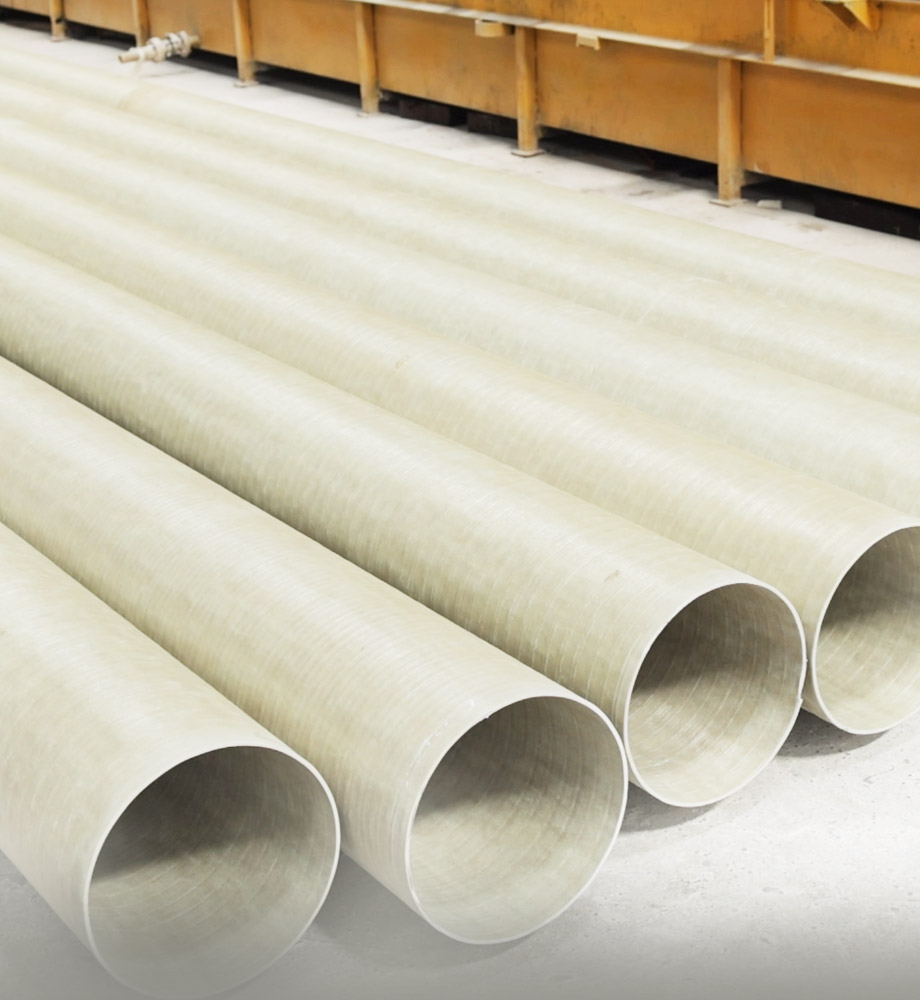Key Features
- Composite Strength: High strength-to-weight ratio; structurally robust yet lighter than steel.
- Corrosion Barrier: Thick resin-rich internal liner (vinyl ester or epoxy) for chemical durability.
- Smooth Interior: Reduces buildup and pressure drop, improving flow.
- Versatile Materials: Options include FRP, FRVE (vinyl ester), GRP, or fluoropolymer linings.
Benefits
- Low Maintenance: FRP rarely needs recoating; smooth walls avoid scaling.
- Long Service Life: Decades of operation in corrosive environments without loss of integrity.
- Easy Installation: Light pipes and fittings with flanged or grooved joints speed assembly. Flexible configurations – straight runs, bends, reducers – easily fabricated.
Applications
- Internal spray header piping and nozzles.
- Recirculation lines connecting absorber to process tanks.
- Slurry transfer pipelines, drain lines and tank connections.
- Lime dissolution and reagent dosing lines.
- External stack recirculation loops.
Technical Specifications
- Standards: ASTM D2996 filament-wound FRP pipe or hand-lay; ASME Section IX welding for filaments; ANSI flanges.
- Diameter Range: Typically 1″ to 60″ (large-diameter field-wound).
- Pressure Rating: Up to 150–300 psi (sizes and laminate dependent).
Unique Selling Points
We provide engineered FRP piping for entire FGD projects. Our solutions include precision-formed bends and large-diameter spool pieces. For aggressive chemistries, we offer dual-laminate systems (FRP shell with a PP/PVDF liner) for Thermoplastic-Lined FRP Piping (see next section). As RPS Composites notes, FRP pipes combine durability with lightweight ease-of-handling, making them ideal for complex FGD piping networks.

